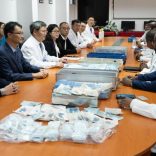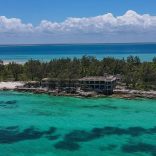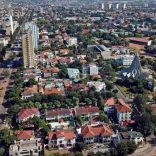Official numbers on medical treatment for substance abuse rise in 2024, Maputo city leads
Mozambique has 7 routes for organ trafficking

RR / Paulo Cunha / 62% of victims are children, adolescents, women and the main destinations of the traffic are believed t be in Malawi, Zimbabwe and South Africa. 50% of the inquired believe that the killings are ordered by traditional healers
Mozambique has seven routes for the trafficking of human body parts, with activities undertaken by increasingly sophisticated organized networks, according to a report released on Friday, March 4 20116, by the Human Rights League.
The report, entitled “Trafficking in Organs and Human Body Parts”, is the result of investigations covering the years 2010 to 2014, and says that the networks use routes through Cuamba and Nchinji in northern Mozambique, Shire, Machanga and Beira in the centre and Limpopo in the south.
“The southern half of Malawi gets most of the Mozambican body parts from the east of Tete, the west of Zambezia and Niassa,” says the study, which interviewed 433 people but does not cite a figure for the number of trafficking victims.
The regions of Greater Limpopo (south) and the so-called Manicaland in central Mozambique mainly supply Zimbabwe and South Africa with the body parts of Mozambicans killed for the traffic, the document presented by League researcher and lawyer Paulo Jorge claims.
According to Jorge, regions specialize in different body parts. Albinos are the main victims in the north, whereas in Maputo, human heads and genitals predominate.
“Low incomes in the border regions and rural areas makes it easy to recruit young people between 18 and 30 to get organs and body parts for criminal cells. The going rate is 200,000 meticais (EUR3,600] per extraction,” the document says.
Women, children and adolescents account for 62 percent of the victims, while 25 percent of the cases involve male genitals. Jorge’s analysis maintains that more than 50 percent of respondents think the organs are for use by traditional healers.
“Currently, the central region of Mozambique registers most trafficking cases, with 70 percent of extractions occurring in Tete, Zambezia, Manica and Sofala,” the report says.
Jorge said that combating human organ trafficking requires the creation of a special Criminal Investigation Police (PIC) unit and increased sensitivity of the judiciary to the problem.
“The PIC, in its current form, is not equipped to investigate and neutralize organ trafficking, and judges seem reluctant to acknowledge that these crimes involve sophisticated networks,” Jorge says.
Supervision of the activities of traditional healers through registration with the Ministry of Health is also an important intervention to combat the phenomenon, the report concludes.












Leave a Reply
Be the First to Comment!
You must be logged in to post a comment.
You must be logged in to post a comment.